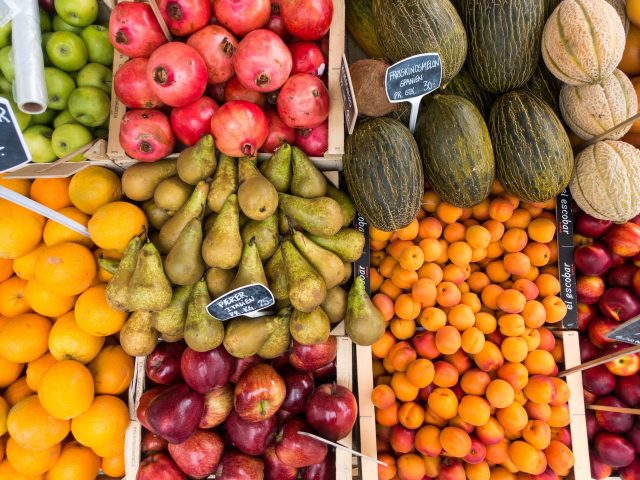
With global programmatic ad spend on the rise, and with nearly half the year already behind us, now is the perfect time to assess the key trends that are emerging. We’ve seen enough of 2025 to make meaningful observations and draw conclusions about where programmatic advertising is headed. So, if you’re wondering about the future of programmatic advertising, you’ve come to the right place!

DOOH advertising
To put it simply, DOOH (digital out-of-home) advertising is a type of outdoor advertising. Ads are shown on digital screens using technology, such as LED screens. Instead of printed posters, as in the case of OOH (out-of-home) advertising, DOOH helps to display eye-catching ads in public spaces like streets, malls, airports, and even elevators! For instance, a screen can be placed in the street, allowing all the pedestrians to see the ad, or in other often frequented places, like a university building or a mall. What’s vital, DOOH supports programmatic technology. Programmatic ad buying and selling of ad space aids in automating the process, making it more efficient and data-driven. This means advertisers can deliver the right message to the right audience at the right time, based on factors like location, time of day, and more. This precise targeting is the key to running ad campaigns successfully.
CTV and OTT advertising
So, let’s start from the beginning – what hides behind the CTV and OTT abbreviations? Basically, Connected TV (CTV) is a television set connected to the internet, which allows users to stream videos and music. Over the top (OTT) is a similar concept, but it happens when streaming services deliver shows and movies straight to the user over the internet. In short, CTV refers to where the ad is shown (the device), and OTT refers to how the ad gets there (the streaming service). When it comes to advertising, more and more advertisers want to use their ad spend to show targeted, engaging ads to viewers using CTV and OTT services.
Programmatic audio
Thanks to the rising popularity of podcasts, music streaming, and even digital radio, programmatic audio is sparking more and more interest among advertisers. It allows them to run targeted audio ads, inserted in real-time, to reach listeners. As per IAB’s (Interactive Advertising Bureau) Europe’s AdEx Benchmark study, from 2018 to 2022, digital audio grew faster than any other advertising channel in Europe. What’s more, the European digital audio market, with 772 million euros in ad spend in 2022, is projected to go beyond 1 billion euros by 2025. In the past, a significant problem that didn’t allow programmatic audio ads to flourish was the lack of proper delivery standards. However, in 2014, the situation changed, and the IAB introduced Digital Audio Ad Serving Template (DAAST), the first good solution to the scattered state of audio digital advertising.
Machine learning in programmatic advertising
Despite AI having gained massive attention and becoming a buzzword across various fields, including but not limited to ad tech and programmatic, its relevance in this sector will continue to grow. AI is already helping and will be helping the ad sector in many ways. Among others, AI is effective in tackling various ad frauds, such as click fraud, domain spoofing, and impression fraud, by identifying patterns, detecting abnormal behavior, and revealing scams with the help of natural language processing. In addition, machine learning algorithms are often applied to optimize ad placement, ensuring that ads are shown in spots that drive the highest levels of engagement. What’s more, AI enhances contextual advertising (more on that below) because, unlike basic keyword matching, modern AI understands the full context of a webpage, making contextual ads more relevant and accurate than ever before. If you wish to learn more, we have prepared the whole article on the subject of AI in programmatic advertising.
Focusing on first party data
The last few years have been full of twists and turns regarding the issue of third-party cookies. Google has definitely taken the lead in this area, repeatedly postponing the final date for phasing out third-party cookies from the Chrome browser. Interestingly, at one point, the company even decided that 1% of browsers would experience the third-party cookie phase-out. However, right now (as of May 2025), the rollout has been paused. Instead of the initial plan, Google now plans to introduce a Chrome feature aimed at helping users better understand and control how their data is used. The frequent changes in Google’s timeline reflect more than indecision; they highlight a transition phase in the digital advertising ecosystem. As the industry moves away from third-party tracking and toward models that prioritize transparency and user control, the path forward continues to face technical and strategic hurdles.
For publishers, this shift has created both challenges and opportunities. With third-party identifiers losing relevance, first-party data has become one of the most valuable assets in the ad ecosystem. Many publishers are now focusing on strategies to capture, enrich, and activate their own audience data, from newsletter signups to paywall interactions, to maintain their role in the ad value chain, and this tendency is very likely to stay with us in 2025 and beyond.
More and more video ads
Short-form videos are beloved not just in digital advertising but across the entire online landscape. As attention spans continue to shrink, it’s no surprise that the advertising industry is keeping pace with Instagram Reels, YouTube Shorts, and TikTok content. In 2025, if content isn’t quick to consume and captivating enough to stop the scroll, it’s likely to go unnoticed, and digital ads are no exception to this rule. Automated buying and selling of video ad inventory allows publishers to efficiently serve targeted, real-time ads within their video content, whether pre-roll, mid-roll, or out-stream formats. However, publishers can also benefit from programmatic video advertising without having their own video content, and that’s thanks to out-stream video ads, which, in contrast to in-stream ones, are displayed next to non-video content. Ad formats like in-article video ads, Interstitial video ads, or in-banner video ads are an excellent addition to profitable monetization advertising strategies.
Contextual advertising
Through contextual targeting, advertisers serve ads that align with the on-page or in-app content. In times of restricted privacy laws, with a growing audience awareness of the drawbacks of third-party cookies, this method will be used more and more widely. As privacy-first solutions become essential, contextual advertising is gaining momentum within the programmatic advertising space because it shows relevant ads without needing to track people’s personal data.
Trends come and go, but programmatic stays strong
Every year brings new trends and changes in advertising, but one thing is for sure: programmatic advertising is still a solid and reliable option. And as new solutions emerge, programmatic adapts right along with them, helping to monetize websites, mobile games, and video content. Programmatic helps publishers grow by making ad space selling easier and using data to make smarter decisions. In such fast-paced times, optAd360 is here to help you navigate all the changes and make the most of your advertising strategy. Discover how we can elevate your ad revenue in 2025 and beyond, with our website monetization, mobile game monetization, mobile app monetization, and video content monetization solutions! While you will create your amazing content, we will do the heavy lifting!


